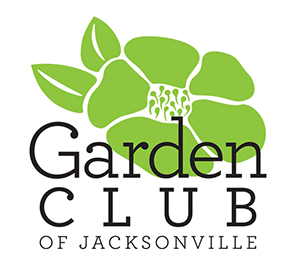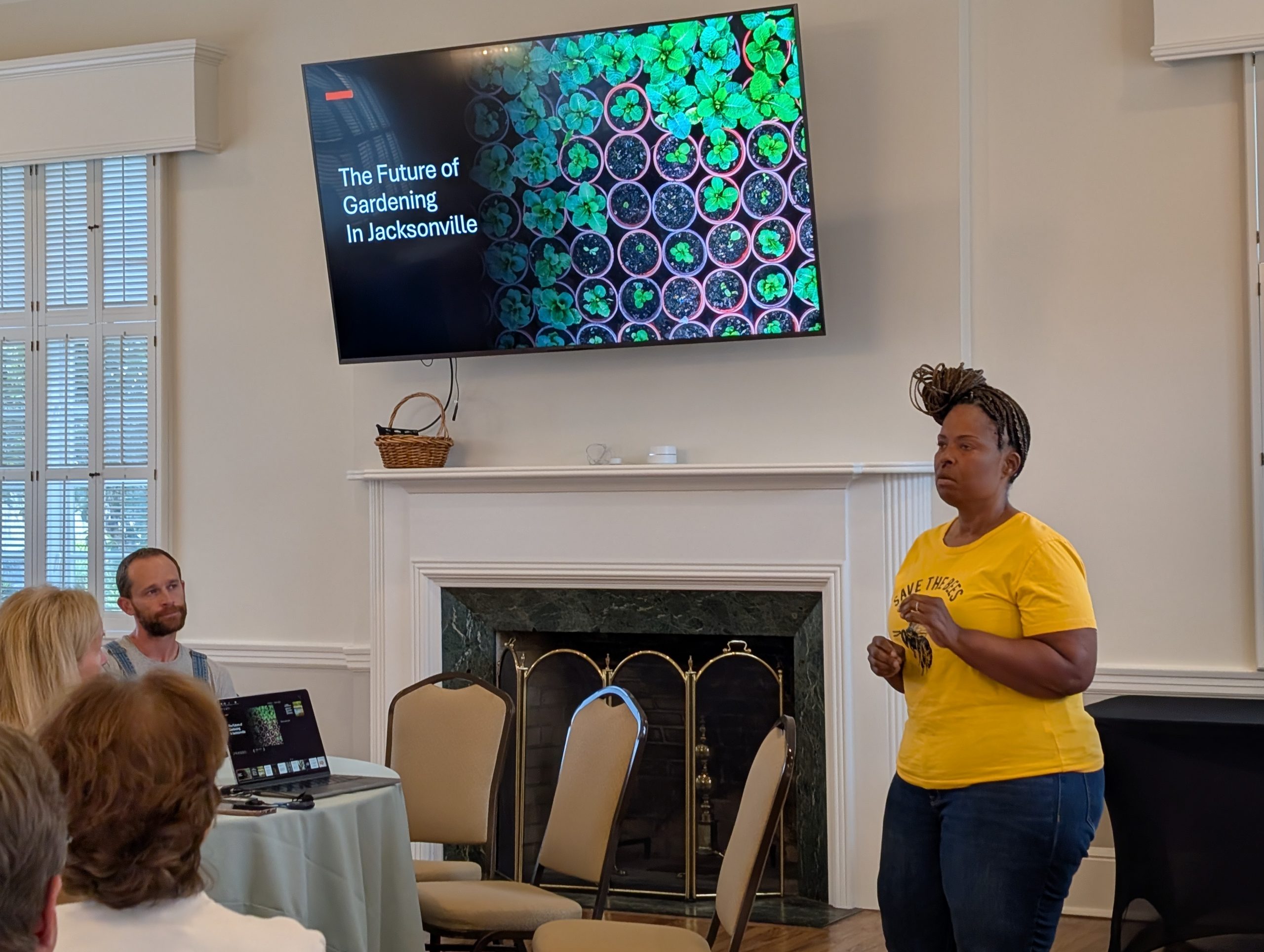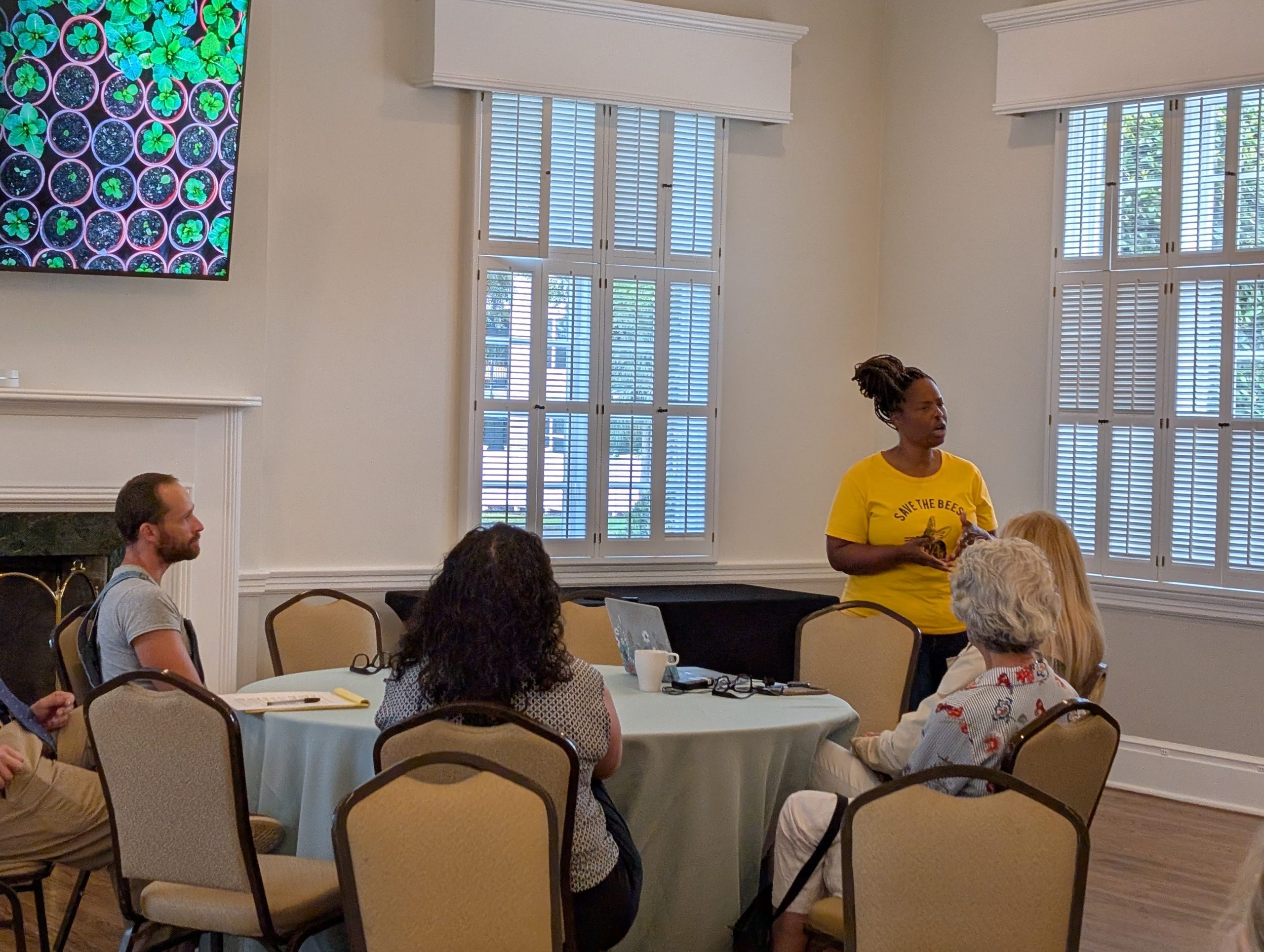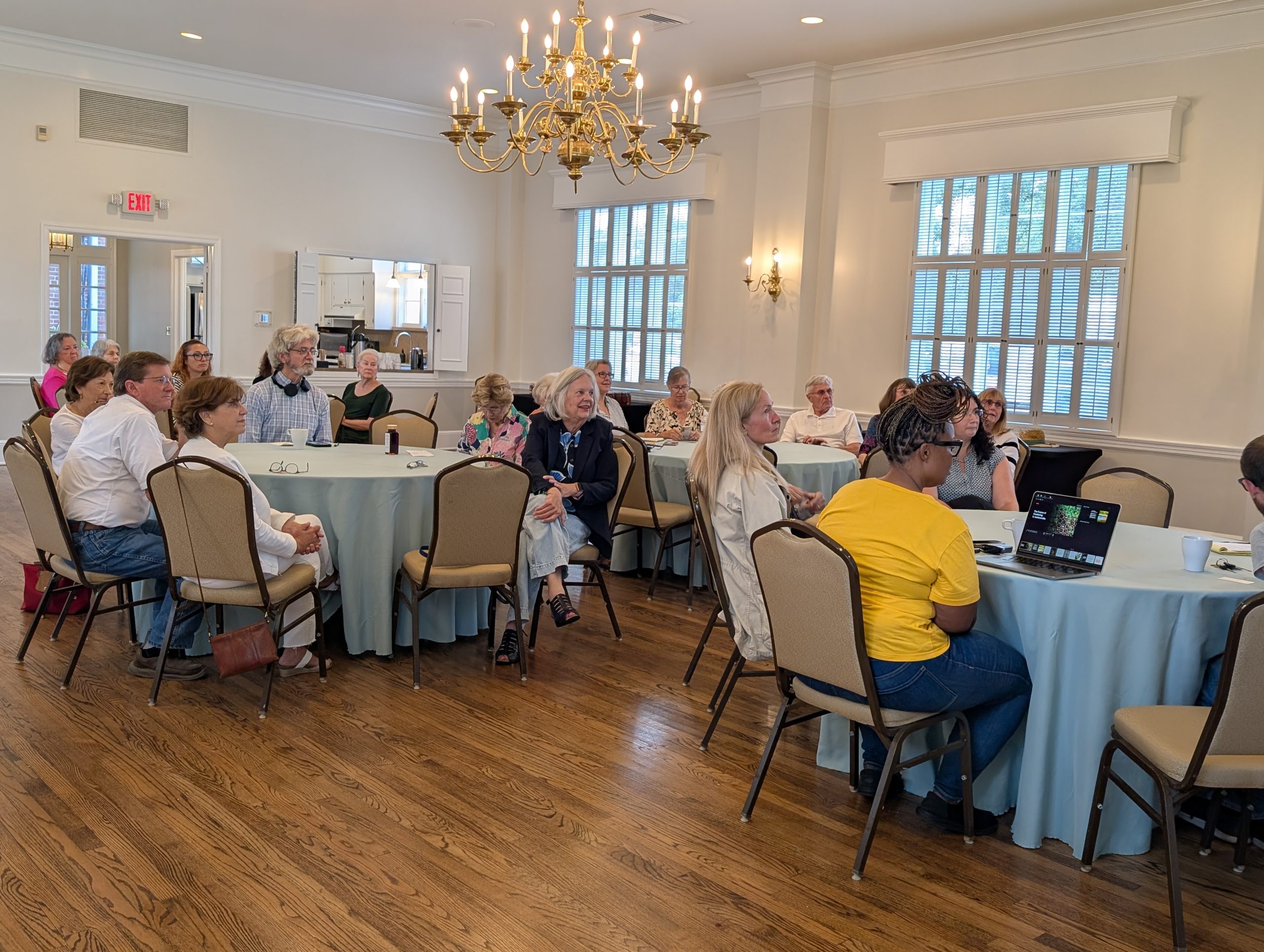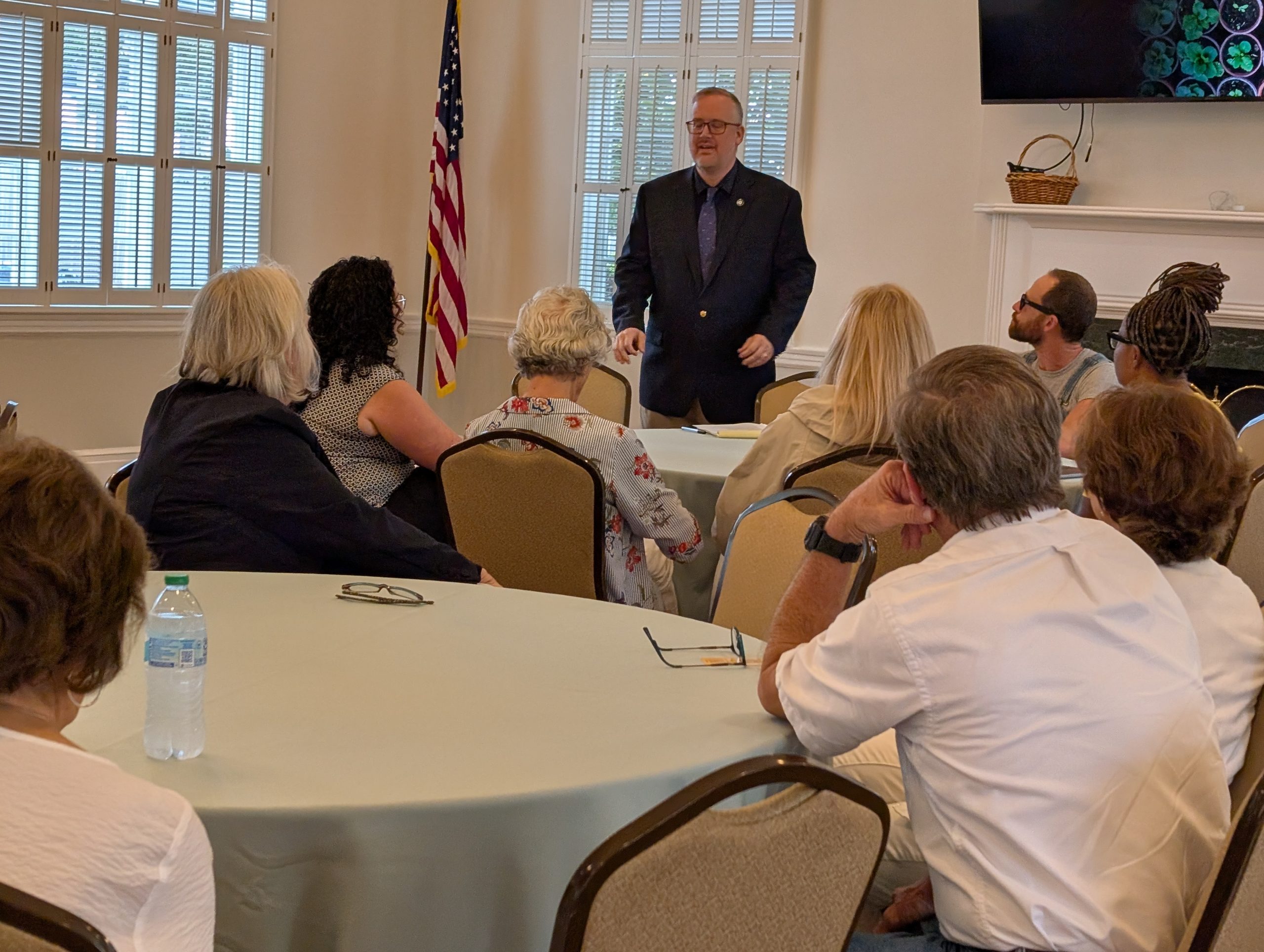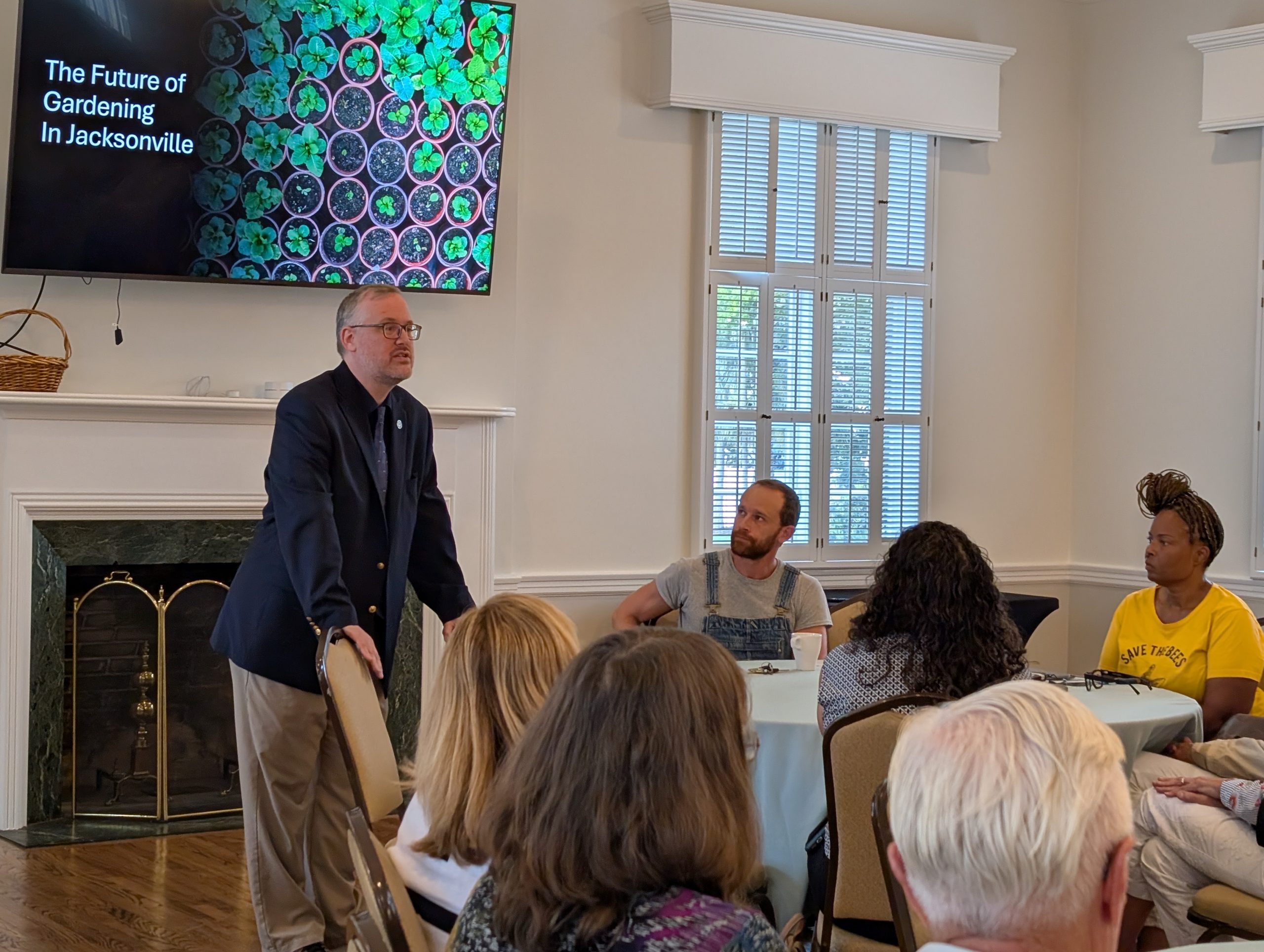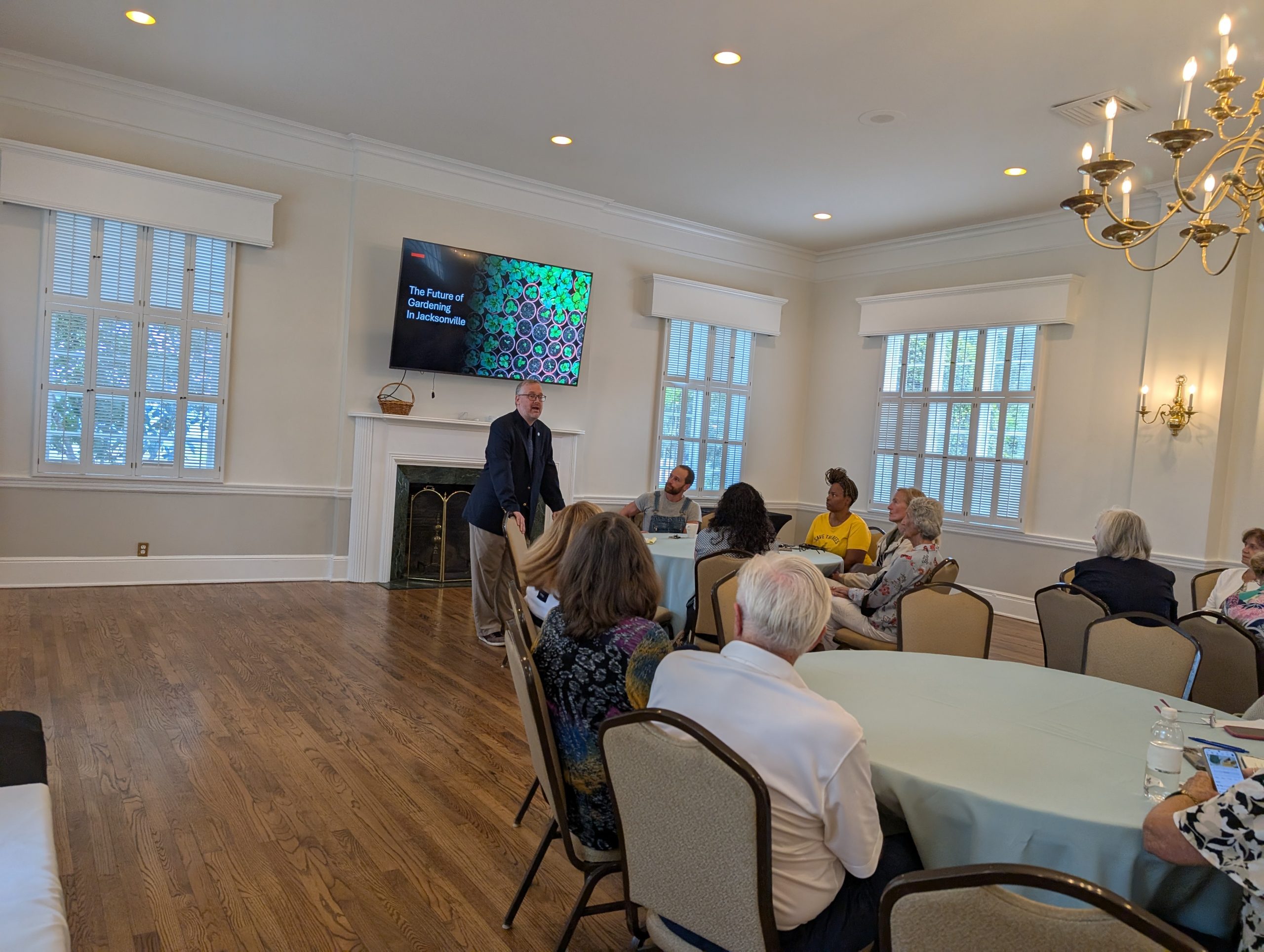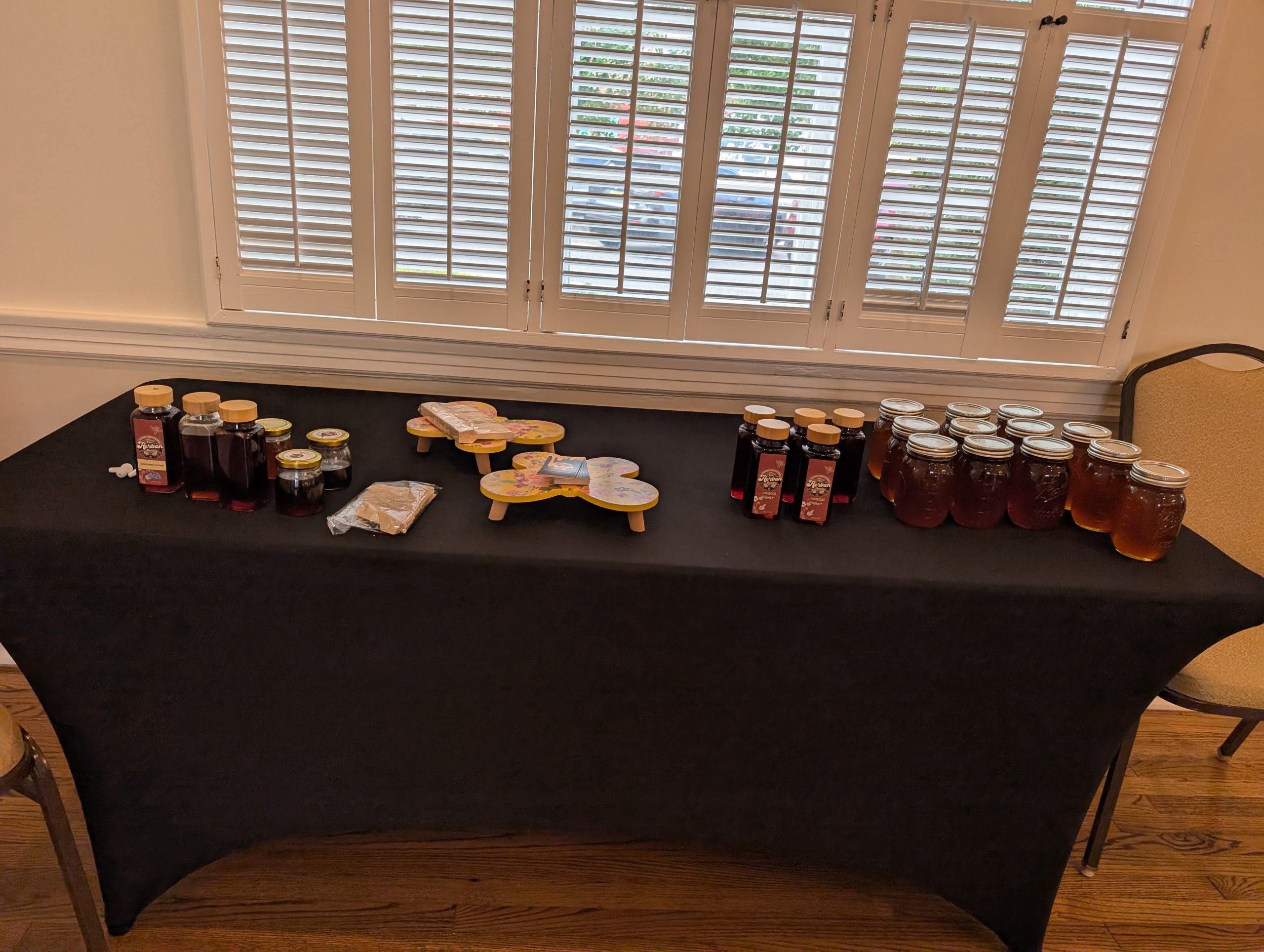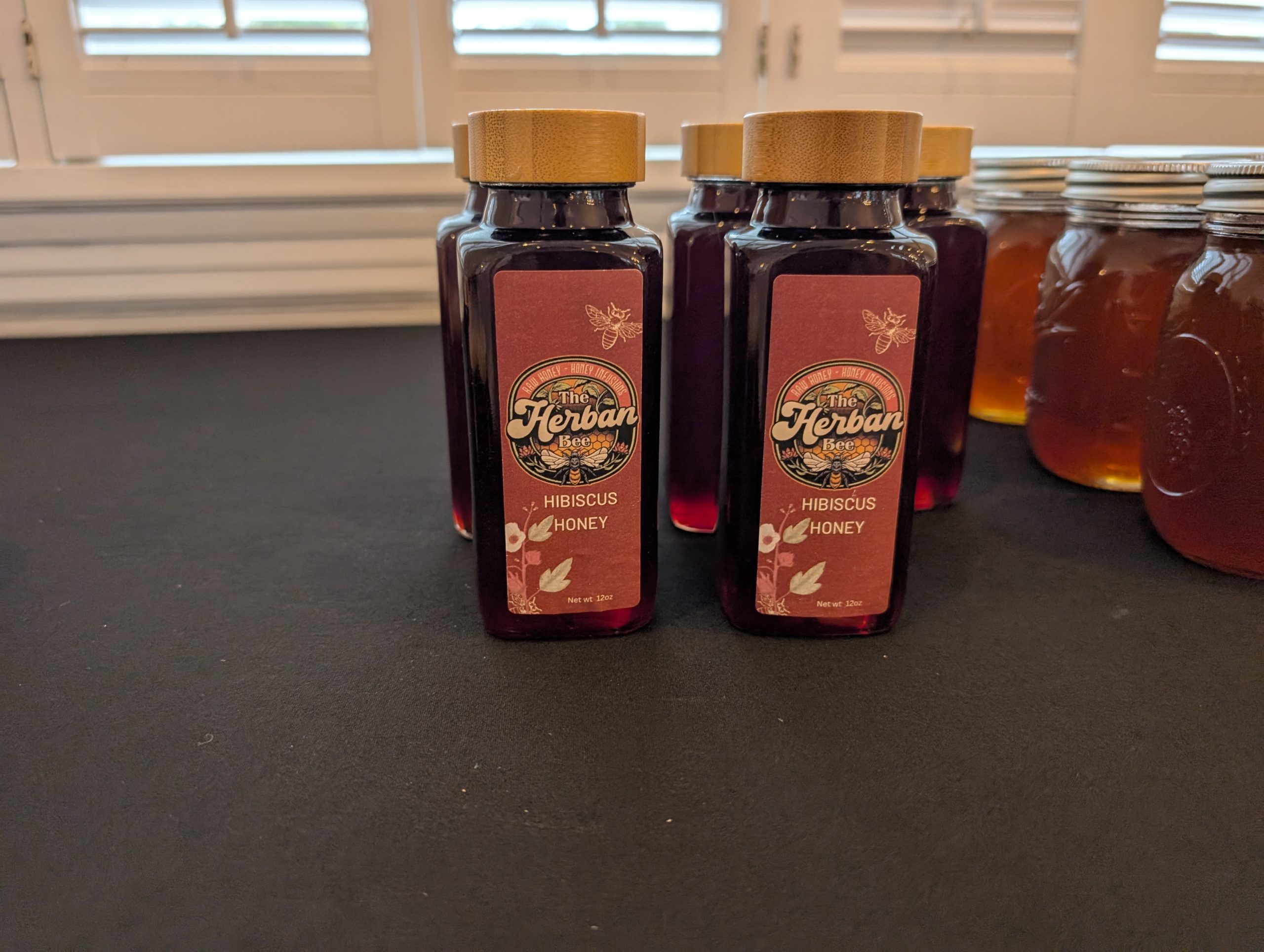On July 14, the Garden Club hosted Nathan Ballentine, The Man in Overalls, and Mika Hardison, co-owner of The Herban Bee to speak on the future of gardening in Jacksonville.
From community gardens to local apiaries and more, gardening in Jacksonville, both public and private, is vibrant and looking to a bright future. Guests learned about local efforts to bring gardening options to Jacksonville citizens and neighbors.
Climate Resilient Gardening
Did you know Florida has eight gardening zones? Gardening zones tell you the climate that you’ll be gardening in. Jacksonville is located in 9A, which has a minimum average winter temperature is 20 to 25 degrees Fahrenheit. As temperatures rise, tolerant, heat-resistant, and native plants are gaining popularity. Native plants know how to hold onto water with deep roots and provide soil regeneration and water conservation. Extreme weather events are also on the rise, so plants resistant to these events.
Smart and Tech-Integrated Gardening
Tools are changing for gardening needs. Smart irrigation systems, moisture sensors, and AI garden planning tools are making gardening more precise and efficient. Apps are being developed to track plant growth, disease, pests, and companion planting are growing in use–sometimes just by taking a photo! Indoor hydroponic and aquaponic systems are increasingly common in apartments and small homes, so that residents in small spaces can enjoy fresh produce.
Urban and Micro-Gardening
Rooftop gardens, vertical gardens, and balcony gardens are expanding in cities across the urban landscape. Like small hydroponic gardens, the use of containers, raised beds, and modular growing systems are being used to grow food in small spaces like small yards, alleys, or lots. These can grow into community gardens, which double as social and food justice hubs, especially for people in urban food deserts.
Regenerative and Ancestral Gardening
A return to indigenous growing practices, African diasporic foodways, and Black agrarian traditions are becoming more popular. This is an emphasis on gardening as resistance, healing, and cultural preservation. Like native plant gardening, it has a focus on soil health, seed saving, and pollinator habitat restoration.
Edible and Functional Landscapes
As ornamental, grass lawns phase out edible landscaping is on the rise. People are growing food with a purpose: culinary herbs, fruit trees, medicinal plants, pollinator plants. This is meeting a need for increasing demand for heirloom, culturally significant, and nutrient-dense crops.
Ecological and Wildlife Gardening
Gardens are designed as micro-ecosystems: native plants, pollinator support, bird habitats, and wildlife corridors. There there is a growing interest in permaculture and re-wilding spaces, even in urban areas so that pollinators have a rest stop.
Sensory, Mental Health, and Therapeutic Gardens
Gardens are healthy in all sorts of ways! They can be designed for well-being, mindfulness, and neurodiversity. Sensory gardens incorporate sound, scent, touch, and movement into garden design. As a therapeutic practice, gardening is being embraced for trauma recovery, elder care, autism support, and more.
Circular & Low-Waste Gardening
Composting, worm bins, bokashi (an anaerobic pre-composting method), and closed-loop systems, reduce, re-use, and recycle every day food waste. You don’t need complex containers either. Upcycling containers and repurposing materials reduces plastic use. Seed swaps and plant-sharing networks are also becoming popular and people share with their neighbors..
